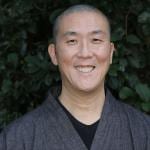
Silent Illumination: A Chan Buddhist Path to Natural Awakening, by Guo Gu Laoshi (available now for preorder and preview) is a wonderful expression of the buddhadharma from beginning to end. As you probably know, Guo Gu is an important contemporary Chan teacher, a successor of the great Sheng Yen. He also has one of the coolest websites around: click.
In Silent Illumination, Guo Gu offers a strikingly fresh perspective on the significance of the phrase, silent illumination, grounded in the Chinese Chan perspective, compellingly rehabilitating and reintroducing silent illumination and the teaching of Zen Master Hongzhi to the English-speaking dharma world. For Guo Gu, silent illumination is not a specific practice, but a synonym for buddha nature. And that’s a game changer.
So Silent illumination includes the whole path of practice and realization, from “Starting from Where We Are,” “Underlying Feeling Tones,” and “Supportive Attitudes to Cultivate,” through “The Vacant Field.” (1)
Up to this point in Western dharma literature, what we’ve heard most about silent illumination is from either the Japanese Soto or Rinzai perspectives. From the Soto perspective, silent illumination, at it’s best, is a samadhi practice that naturally unfolds into awakening. From the Japanese Rinzai perspective, following the Chinese Chan Master Dahui, silent illumination is about wallowing in fake emptiness, something to be avoided at at all costs. As Hakuin put it, “These days in temples throughout the country people are immersing themselves in the dead, stagnant waters of quiescent silent illumination Zen.”
For more on this see “Hakuin’s Blistering Criticisms of Sōtō Zen: Who and What.”
Guo Gu pulls silent illumination from the jaws of this controversy. He writes,
“Buddha-nature, our natural awakened nature, is really another word for silent illumination (mozhao). Yet, many misunderstand it as an exclusive meditation method of certain sects within the Chan tradition and say that it was advocated only by Chan master Hongzhi Zhengjue (1091–1157). But silent illumination cannot be claimed by any one tradition within Mahayana Buddhism, and it is not a fixed meditation method” (p. 3). (2)
Further,
“‘Silence’ is the metaphor for the wisdom of emptiness. So are quiescence, formlessness, spaciousness, stillness. These are all Hongzhi’s poetic terms for the Mahayana teaching of selflessness. ‘Illumination’ refers to the wondrous activity of this selfless wisdom that, in Buddhism, is none other than compassion” (p. 5).
But the book is about much more than this one point.
Guo Gu says,
“Chan Buddhism clarifies what awakening is and shows how to transform everyday experiences into the path. Distilled from centuries of development, Chan is the culmination and fulfillment of the Buddha’s original message. However, the essence of Chan is largely absent from existing publications on Buddhism in the West, and this is especially true of the teaching on silent illumination” (p. vii).
And so Guo Gu’s aims for the book are
“… To establish silent illumination squarely within the Mahayana Buddhist traditions. Second, to offer detailed instructions for establishing a foundation for realizing silent illumination. Third, to offer quality translations of Hongzhi’s poetic writings on silent illumination” (p. viii).

And in fulfilling the aims of Silent Illumination, Guo Gu also offers up some pointed and fair criticism of those in the Soto school who ascribe to silent illumination as a practice:
“Chan practitioners must have confidence in buddha-nature, our intrinsic freedom, but this confidence is not something we can rationalize. I’ve met Zen practitioners who, in meditation, bring forth this faith in ‘just sitting’ as an expression of awakening or buddha-nature. It is an expression of buddha-nature, but, when I inquire further about it, I found that what they’re doing is thinking about faith and conviction in buddha-nature while they sit. They are engaging in a monologue to remind themselves about their faith and conviction” (p. 34).
In part for this reason, Guo Gu says,
“I emphasize cultivating correct attitudes and being more aware of subtle feeling tones. In order to become aware of undercurrent feeling tones, we have to train ourselves to experience them. The more immersed in our inner states we are, the more experienced we become, and the more we’re able to navigate them and become skillful practitioners” (p. 21).
Indeed, the first third of the book focuses on practices for identifying feeling tones and cultivating supporting attitudes, including an important section on embodied experiencing.
Guo Gu says,
“One main method for silent illumination is what I call embodied experiencing. It’s an antidote to the fact that most people live in their heads. They are top-heavy, so whatever method they use, they tend to turn it into thinking. Embodied experiencing, particularly in sitting meditation practice, counters this as we experience the presence of the body moment to moment. Experiencing the body is not about thinking. Instead, it is being in the body, with the body, and experiencing it concretely. It is an embodied experience.”
In the second third of Silent Illumination, Guo Gu shares three passages by Hongzhi with his own insightful commentaries: “The Vacant Field,” “The Investigation,” and “Multitasking.” This last one rehabilitates multitasking for post-awakening practice.
Hongzhi says,
“Multitasking amid chaos, manifesting in places of encounter—none of these are realms outside of yourself. Heaven and earth share the same root; the myriad forms are of a single body. Adapting to changes and transforming freely without being manipulated by those who curry favor— this is to actualize great freedom. Traveling like the wind; illuminating like the moon; encountering things without obstructions.”
Guo Gu concludes his commentary on this passage with this:
“Only through practicing in life, mingling with all kinds of people, will we be able to deepen our Chan practice. Stopping is not an option. Even after awakening, we still need to work on subtle habit tendencies. Practice continues on and on” (p. 117).
In the last third of Silent Illumination, Guo Gu offers twenty-five of his own translations from The Extended Discourse Records of Chan Master Hongzhi, previously known to the English reader mostly through Rev. Taigen Dan Leighton and Yi Wu’s work in Cultivating the Empty Field.
After praising this work, Guo Gu says,
“[Leighton’s] reading also places Hongzhi’s teaching squarely within the Japanese Soto Zen perspective of shikantaza, or “just sitting” practice. I see Hongzhi’s teaching as belonging to a shared language of Chan. As I show in the introduction, many Chan masters—including those from other lineages—also articulated practice and awakening in similar language. While rendering Hongzhi’s teaching through the lens of Soto Zen practice is useful, it also unintentionally reinforces sectarian divides and limits the broader significance of Hongzhi’s message.”
I find Guo Gu’s spirited translations of Hongzhi limpid and lucid. “How to Proceed,” for example, he has this:
“When your realization is far-reaching and exhaustive, you multiply in response to the multitude of circumstances. As illumination issues forth through your sense doors, the sensory objects appear like cast shadows. You will then realize that all things flow out from yourself. The hundreds of thousands of situations are no longer the causes or conditions that oppose you. Thorough and penetrating right through your whole being— this is how to proceed!” (p. 129).
I hope that in the future Guo Gu will share more Hongzhi translations with his helpful commentaries.
In conclusion, this is a wonderful book. Both old dharma hands as well as newer students will find instruction and inspiration here, as well as a profoundly wholistic approach to the Way.
(1) From the blurb that I offered to Shambhala, most of which appears on the back cover.
(2) All quotes are from Silent Illumination: A Chan Buddhist Path to Natural Awakening. Page numbers appear in parenthesis.

Dōshō Port began practicing Zen in 1977 and now co-teaches with his wife, Tetsugan Zummach Ōshō, with the Vine of Obstacles: Online
Dōshō Port began practicing Zen in 1977 and now co-teaches with his wife, Tetsugan Zummach Ōshō, with the Vine of Obstacles: Online Support for Zen Training, an internet-based Zen community. Dōshō received dharma transmission from Dainin Katagiri Rōshi and inka shōmei from James Myōun Ford Rōshi in the Harada-Yasutani lineage. Dōshō’s translation and commentary on The Record of Empty Hall: One Hundred Classic Koans, is now available (Shambhala). He is also the author of Keep Me In Your Heart a While: The Haunting Zen of Dainin Katagiri.











